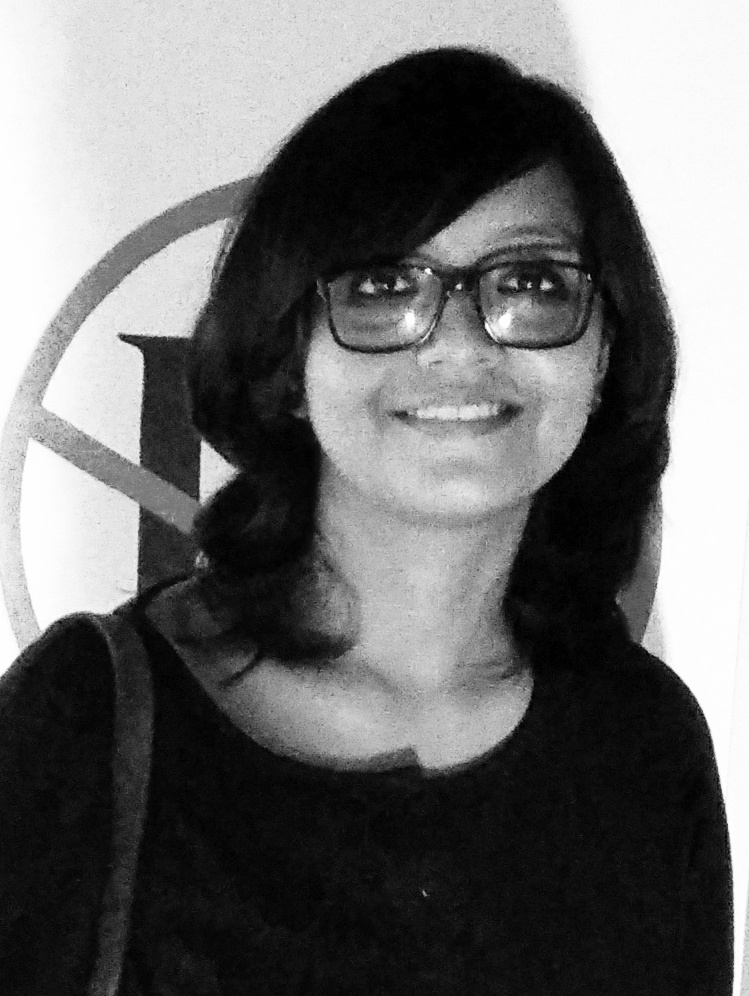‘Experiencing Through Their Eyes’ by Jayeti Bhattacharya | Kolkata, India
Reflecting on her experience on teaching art to children and teenagers, Indian artist Jayeti Batthacharaya offers a vivid account of her approach: “experiencing through their eyes” and engaging the creative power of minds and senses.
Being an artist always make me restless to be more interrogative, curious, researching the existing truth. With these things in mind I started to explore different approaches to art education, looking more attentively at the works of the children and trying to understand how powerfully imaginative can the young minds be while engaging in creating their visual responses.
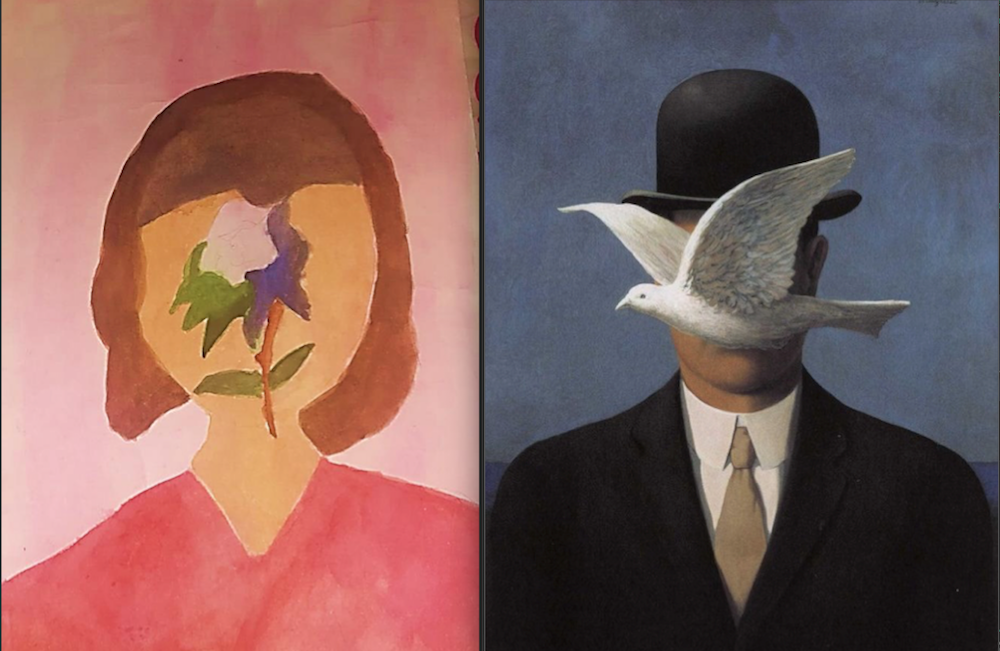
The first thing that I would like to draw attention to is the term “visual art”. The term “visual” does not only refer to something that we witness through our naked eyes, but also to something that we imagine in our minds, simply by listening, without even looking at any object or being. So to visualize something requires that our minds are engaged with our senses, to understand the aesthetic beauty in it. This is what I feel we must convey, rather impart, to the younger minds, in order to help them grow into powerful creative minds.
Art education should be an important part of school education. Unfortunately I think that in the majority of schools in our country art is being taught following limited stereotypes. Art should not be a subject that requires students to imitate what the teachers draw on the board, then finish their work and go back to their respective classes. It should instead make the students think, it should trigger their minds’ visual play, and then let them watch what they themselves start creating with unusual skills. In the process of learning art they will start developing coordination of hands and mind, along with observation skills, which not only will help them develop their creative minds, but their cognitive minds as well, which in turn will shape their entire process of growing. Teachers should not be preachers with ardent followers, but facilitators who create an environment of sharing and exchanging of ideas.
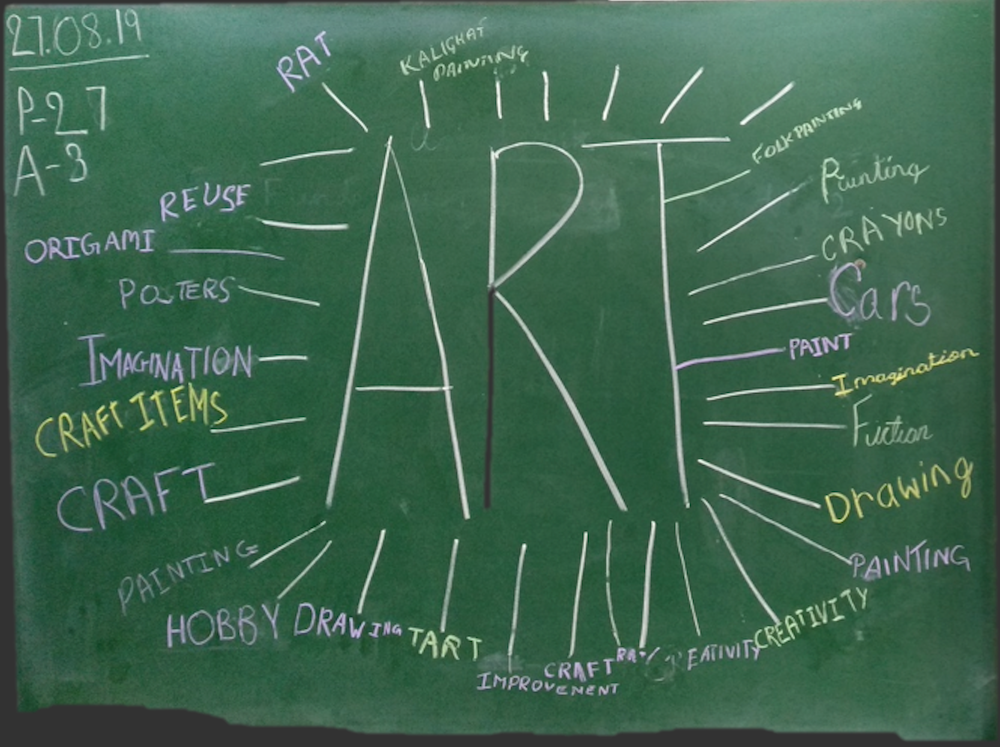
While teaching a series of classes in different grades, with different age groups, I came across certain interesting facts, which made me think that if we push the children to think a little, they will certainly think large. In one of my regular classes, while introducing art to the students of grade 4, I thought of asking the children to write down something they feel when they visualize the word ART…and interesting the first word that came up on the board was RAT…(up left corner). I was amazed to realize that a nine year old girl (her name is Harshita) was able to rearrange the letters of the word, instantly thinking of a new word, and to create a new visual in her mind from the existing word. Some other noticeable words that came up while looking at the word ART were: IMPROVEMENT, REUSE, FICTION, CARS, TART, FOLK PAINTING… These words revealed uncommon thoughts which struck the children. And here starts the process of self assessing and pushing to think what ART is for them.
Visualizing words
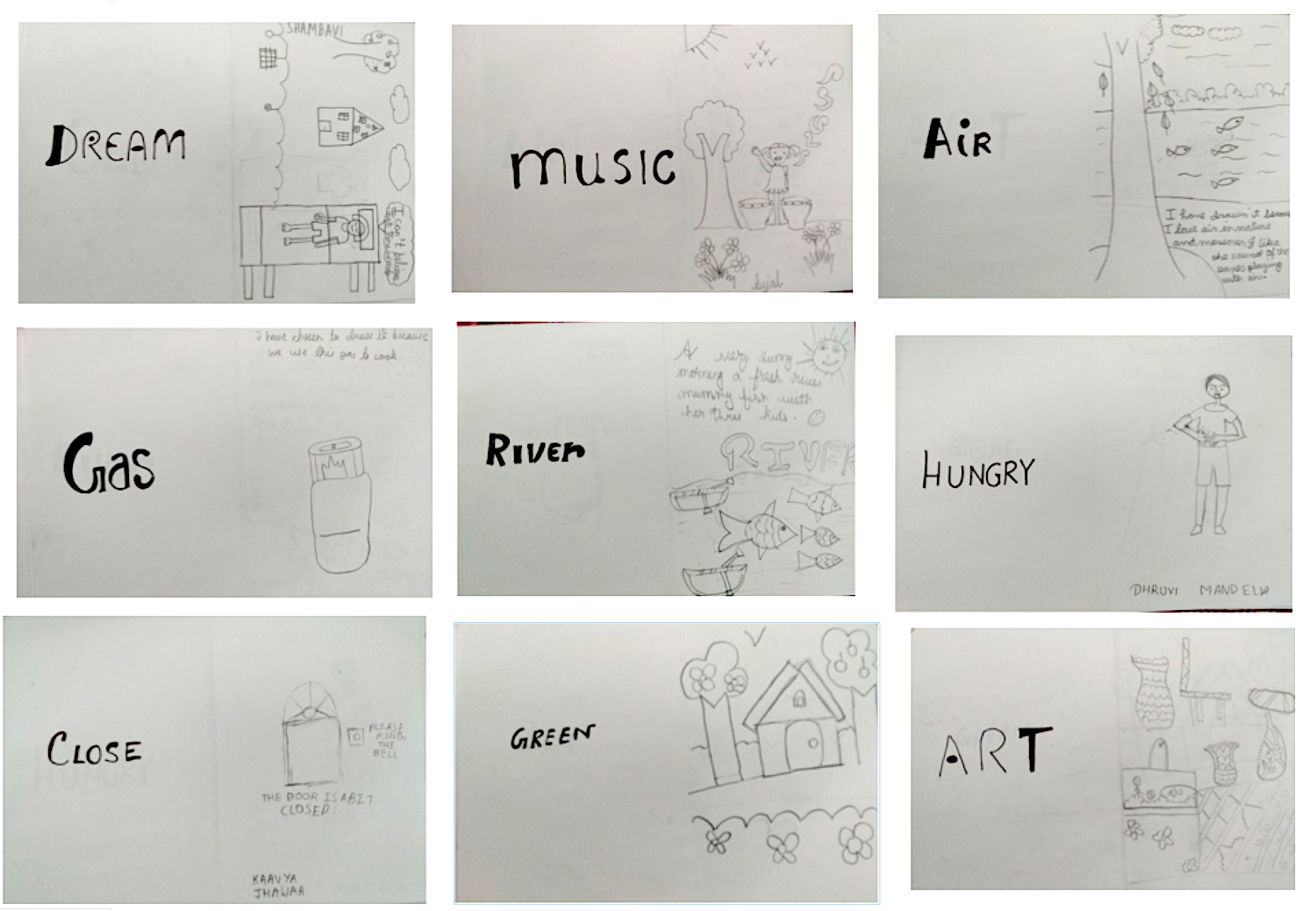
After this session I thought, why not pushing them a little more beyond their thinking boundaries. So, in the next session I repeated the task, with the same age group but different students: they were given some random chits of paper with different words written on it on one side; the other side was left blank, for them to interpret the words in their own way and create a visual for each word.
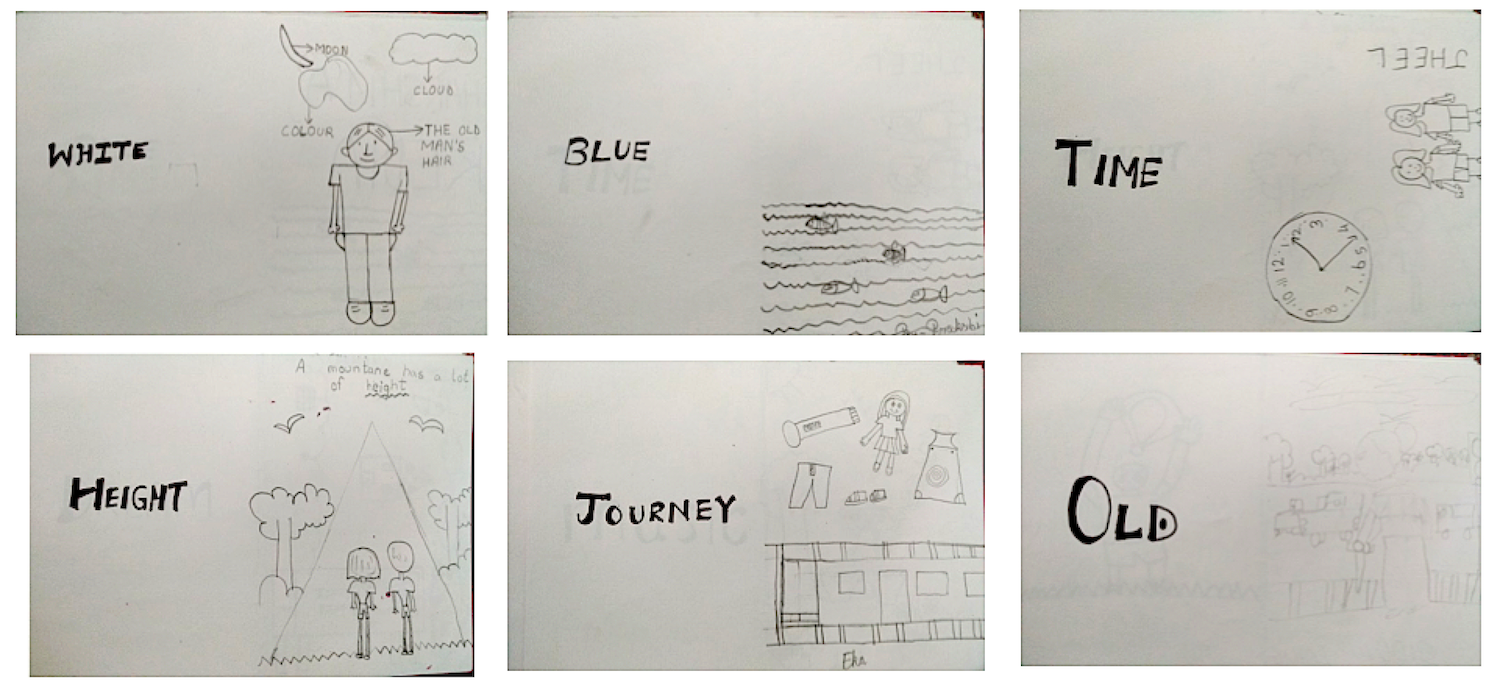
The task was done one to one, that is, one chit given to one student. To my surprise I got some wonderful spontaneous results. From this findings I can say that these words were acting on the young minds in different ways. Some were triggering memories, some translated into symbolical visuals, some were interpreted very thoughtfully, and some as the facts of reality. When the same exercise was done with the age group of 12 year olds (grade 7) the results were completely different: I found less spontaneity and more considerate responses.
The same exercise was done again with the age group of 10 years olds (grade 5), and this time the responses were public and open to all.

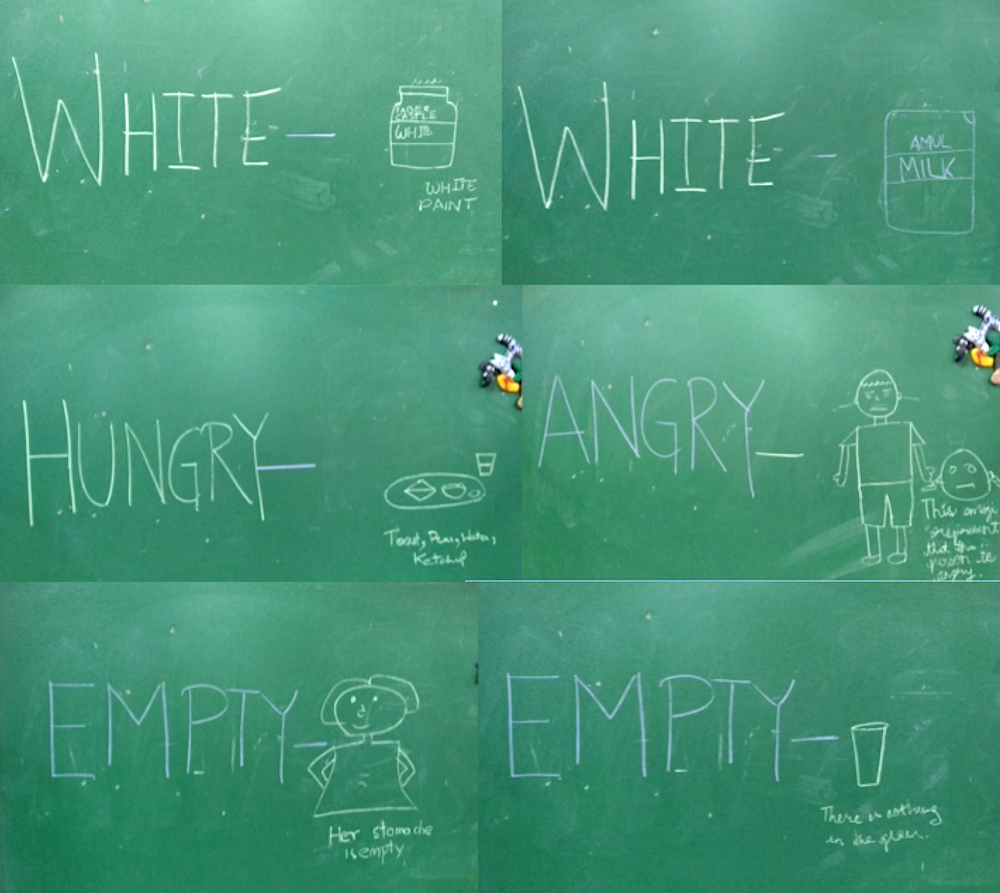
The word was given to them on the green board and they were called to the board randomly, one by one, to visually interpret the word; here again the same word was shaped in different visual forms by different children. There was a tension of excitement throughout the class, about who will get the next chance, whether their friends interpreted their same thoughts, if she would get a chance before her friend, etc. It was a constant brainstorming about how many more visuals they could think of on the same word!
Working with the age group of 14 to 17 years olds was a completely new and different experience: the students were themselves the teachers, coming up with new ideas, while I was there to help them in execution only.
Creating Stories

Just like with words, another time I tried the opposite task, giving the children drawings of scattered objects, asking them to frame a visual composition using those objects, and frame a story out of them. In order to do this, to frame a composition and a meaningful story out of it, they had to use together the creative as well as the logical aspects of the brain.
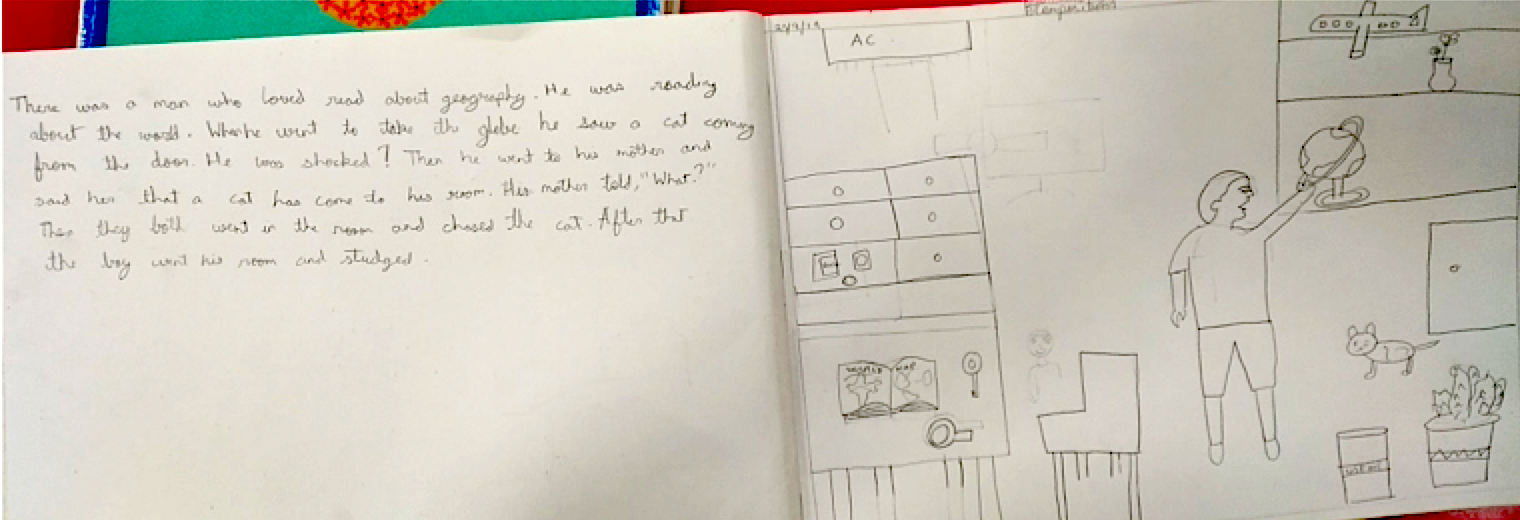


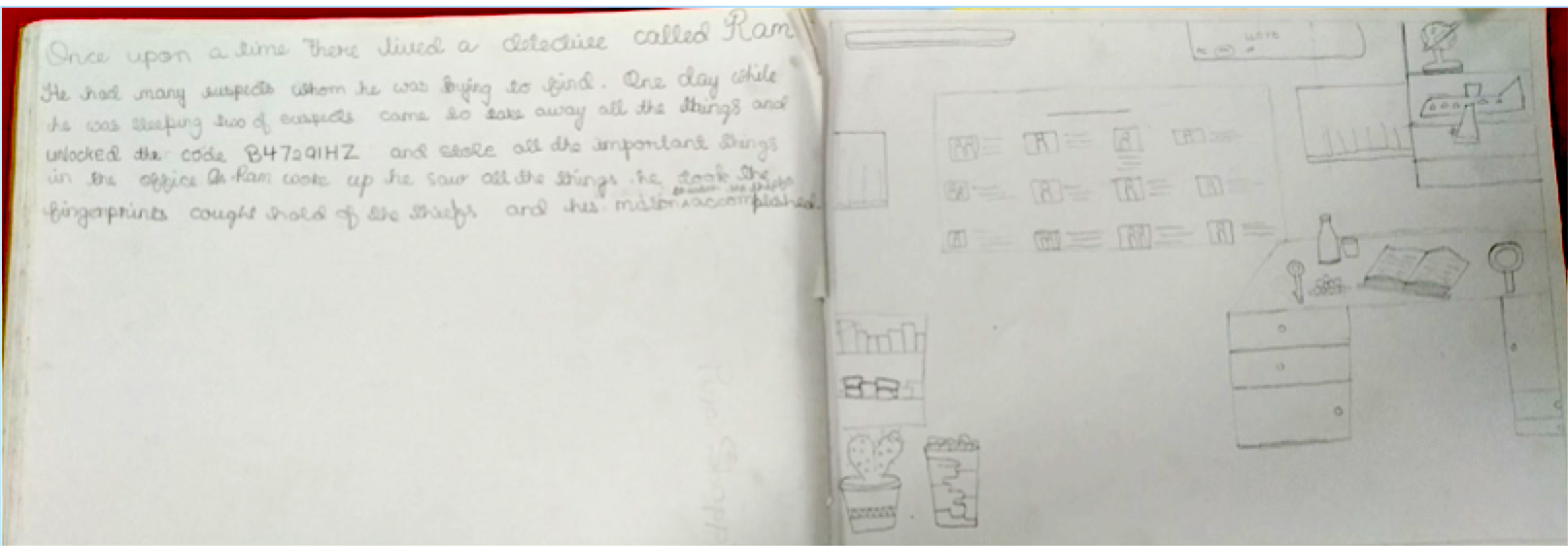
In this process of framing visuals an intriguing work came up in the graphic novel class, when one child came up and showed me five slides with the concept of Chandrayan 2 (Space Mission) , which was recently the talk of the nation.
It felt good to see that the child tried to visualize her story through drawings which had both real and surreal features. In the process of developing a story through visuals on their own, the children will develop skills in different aspects of growth, with a sense of comprehending the reality.
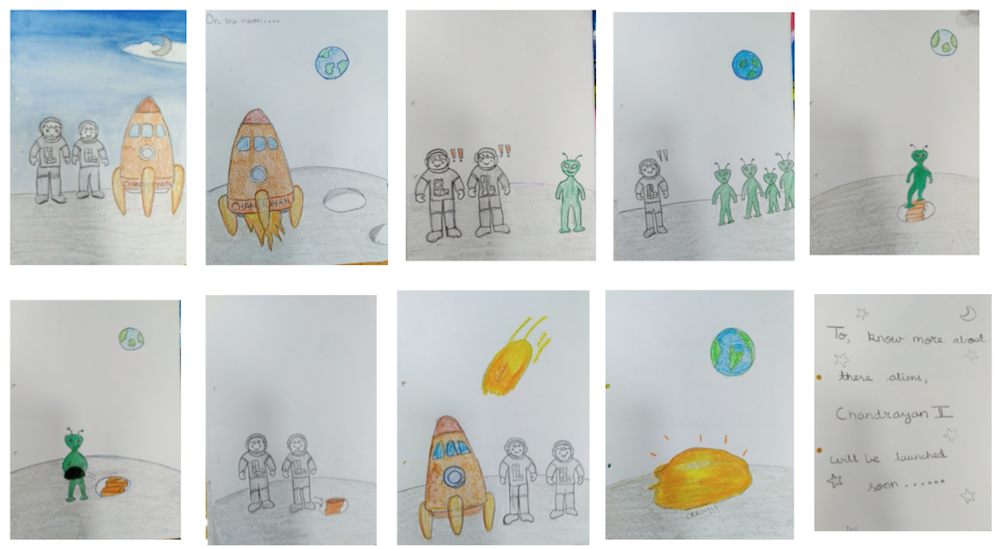
Another interesting response came from a student of grade 12 (Aayushi Jain) who, understanding the works of the surrealist artist Rene Magritte, created her own works in the form of the face of a girl her age, with images of different thoughts embedded over it (see image at the top of the article).
This is what I always imagine I can help my students do: to think beyond and to create in their minds visuals relating to reality; then automatically they will improve on their creativity skills. In most art classes for children and teenagers the hand skills are given priority, but I am convinced that, as teachers, we should inspire the young minds by making them think freely and beyond. The other skills will be automatically learned in the process.
--------------------------------------------------------------------
Jayeti Bhattacharya is an artist living and working in Kolkata, India. She holds a Master’s of Fine Arts from Kala Bhavana, Visva Bharati University. Her work has been shown in many exhibitions, including ‘Defining a Relative Space’ at A.M. Studio; ‘Bad Smell Good Smell’ at Studio 21 in Kolkata; ‘Last Image Show’, both in Dar es Salaam, Tanzania in 2018 and Lusaka, Zambia. In 2019. She was also part of the CIMA Award Show 2019 in Kolkata. Many of her works include a combination of painting and mixed media and address overarching themes related to time, space, land, history and existential reality.
